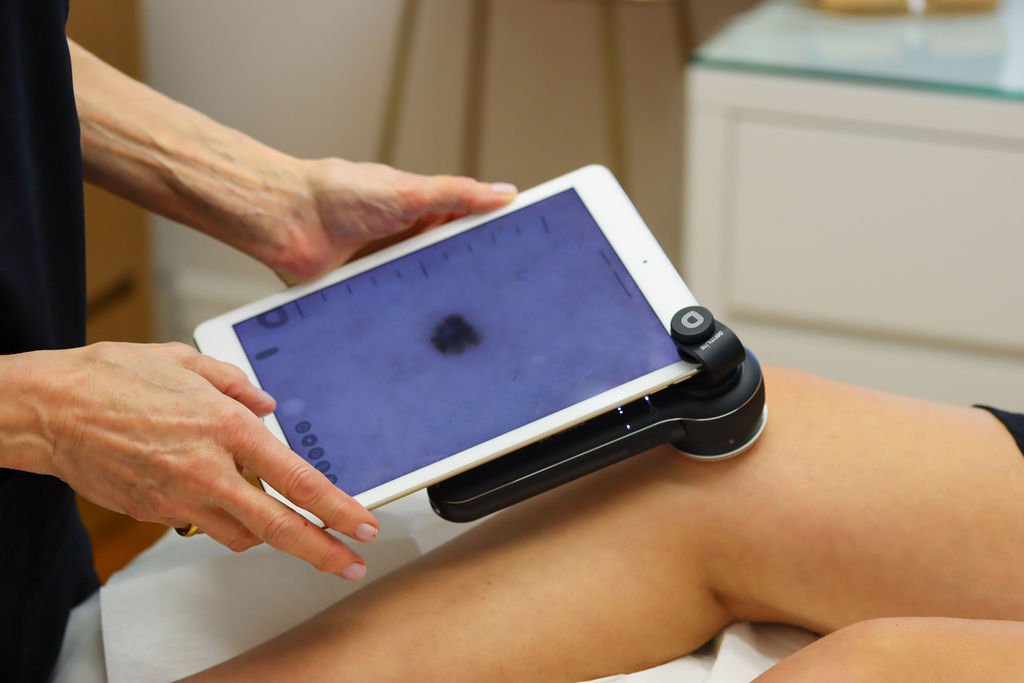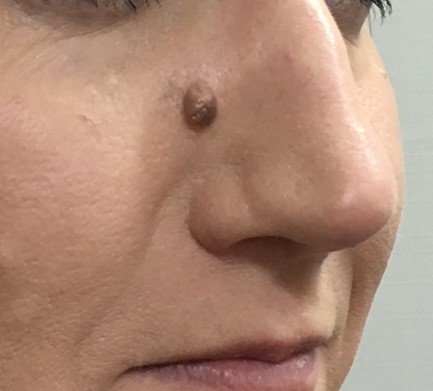
Mole Removal
Mole removal is simple and safe.
Unwanted, unsightly facial moles cause embarrassment for many patients and it’s unnecessary because mole removal is generally a very simple and relatively painless procedure. I prefer to use surgical techniques to remove moles, ‘senile warts’ and other unwanted lumps and bumps from the face rather than cauterizing (burning off) lesions. Surgical excision of benign lesions for aesthetic reasons can be performed by a superficial skin shave with minimal risk of scarring. A superficial shave utilizes a disposable bendable hand held blade which literally shaves the lesion from the underlying skin. Local anaesthetic is injected around the lesion so the procedure is painless. A superficial skin shave results in very little, if any, bleeding – easily controlled by pressure or the application of topical coagulants. In addition, a shave excision results in an intact specimen to send to the laboratory to be sure a melanoma is never missed. Scarring is minimal because the skin has not been subjected to a burn.
All lesions for excision will first be examined using a dermascope (skin microscope) to determine whether or not the lesion is benign and all specimens (apart from skin tags) will be sent to the laboratory for histological examination
Moles can be removed from all areas of the face and body:
Face
The shave technique is particularly useful for certain facial growths as there is minimal risk of scarring, no blister or burn and the healing period is short. A formal excision may be the best option for some lesions. This means fine sutures will be used which I will remove after 5 days when I check the surgical wound.
Armpits/Neck
These are common sites for fleshy growths (skin tags) which can be easily snipped off under local anaesthetic.
Hands
Raised rough lesions (solar keratoses) brown spots and other growths on the hands can often be removed either with surgical excision or shave, the application of liquid nitrogen or the use of topical prescription medications. I will explain and advise which treatment is best and will either prescribe the medication or perform the procedure.



